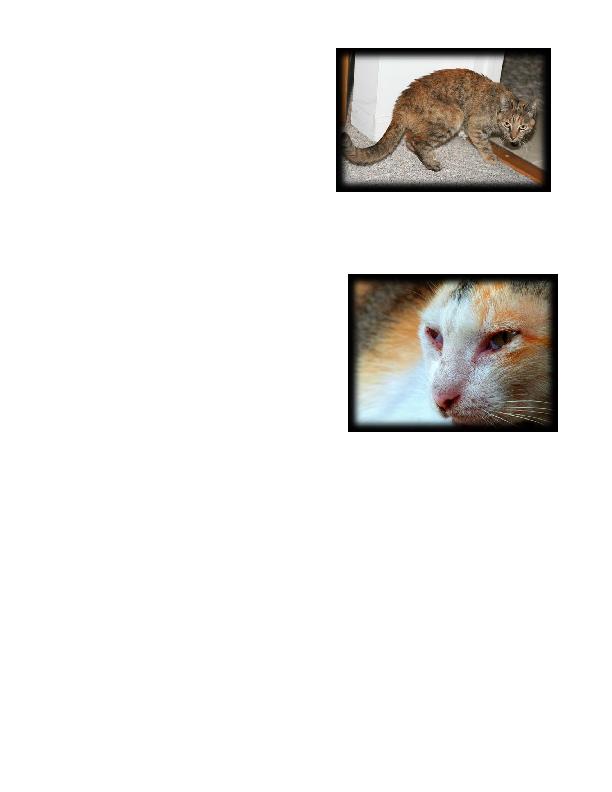
vulnerable, a hurting cat will hide so that he
can avoid being preyed upon by stronger
animals.
licking the area that's bothering them. You see this in a lot in cats with urinary tract
infections or idiopathic cystitis. Siouxsie's sister had recurring episodes of cystitis (she
was very sensitive to stress) and when her bladder was hurting, she licked her stomach
bald.
scruffy. Most older cats look less "put
together" than they did in their younger years
because arthritis or other conditions have
made the stretching required for grooming
too painful. Any cat who stops grooming
needs to be seen by a veterinarian.
almost on the floor. But there are other abnormal positions that may not be so
obvious. For example, in the first video I shared in
look in Dahlia's eyes a lot toward the end of her life.
used to. Holding the appropriate positions for peeing and pooping can be very difficult
for a cat with sore hips or knees. Kissy peed up the side of the box and got urine on
the floor and walls, for example, because her bad knee made it too painful for her to
maintain the usual "pee squat."
with a passion for bad puns, intelligent conversation, and role-play adventure games.